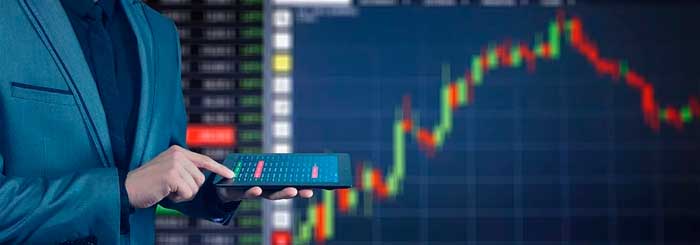By definition, margin trading with cryptocurrency means that users can borrow money against their current funds in order to trade with cryptocurrency on margin. Basically, you can leverage what you currently have in dollars or cryptocurrency by borrowing funds that increase your buying power.
As such, if you put down a certain amount on specific leverage and then borrow, let’s say, $80 in order to buy Bitcoin worth of $100, you’ll only have to pay back $80 plus any fees.
On top of that, the exchange from which you borrow money to engage in margin trading will also call in your margin trade when you reach a price that would make you lose the money you’ve borrowed – to make sure that you pay back the loaned amount.
Leveraging
Let’s now take a look at some of the basics that you need to know if you want to start margin trading with cryptocurrency – we’ll start with leveraging.
As mentioned above, margin trading is simply borrowing funds to help you leverage your bet – while also taking a risk for a reward.
For example, if your bet is on certain crypto going up but it stagnates or goes down and you sit on it, you’ll end up with increased interest – if interest is charged.
On the other hand, if crypto goes down, you will still owe the amount you borrowed as well as any fees, despite the fact that you lost money.
High Leverage
If you’re a trader, you may know that most people prefer relying on high leverage for Forex & crypto currencies trading. This is because higher leverage comes with lower margin requirements and allows traders to trade in high volumes – for example, scalpers.
On the other hand, even though low margin requirements can help you make a profit quite quickly, they may also come with heavy losses or even signal the end of your trading account.
Call Prices and Liquidation
When your position is called in or liquidated, it means that you don’t have the funds to cover your best – thus, your position is closed.
Moreover, even though the lender lets you use their money to margin trade, you will have to use your own funds to cover lost money, as well as fees.
In other words, there’s a Maintenance Margin Requirement that you have to stay above of in order to avoid liquidation. You fall below the MMR if the price of cryptocurrency is opposite to your bet.
If this happens, the exchange that loaned you money will either request the funds from you or start liquidating assets to get their money back – this is also known as a margin call.
The Bottom Line
Overall, margin trading with cryptocurrency allows traders to engage in bigger bets than they can afford, but at the cost of extra risks and extra fees.
Therefore, you can rely on the money you borrowed to make a bet. If the bet is successful, you’ll use your profit to make the lender back. If the bet goes the other way, you’ll have to use your own funds to repay the lender.
Basically, while you are given more funds to trade with cryptocurrency, you take all the risk that comes with it.
Press releases published by Crypto Economy have sent by companies or their representatives. Crypto Economy is not part of any of these agencies, projects or platforms. At Crypto Economy we do not give investment advice and encourage our readers to do their own research. If you believe that any of our press releases may contain erroneous or fraudulent information let us know through [email protected].





